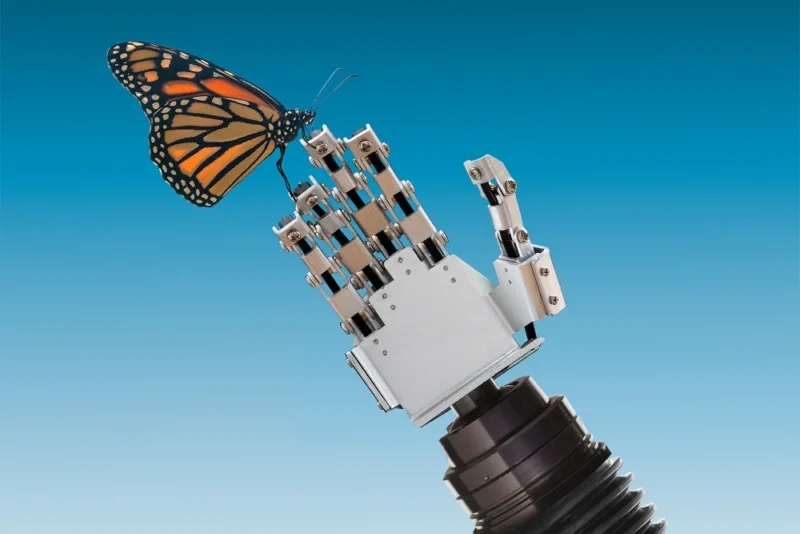[해외 DS] AI가 기후변화에 미치는 영향, “배출량에만 국한되지 않아”
온실가스 배출, 화석연료 생산량 증가, 추천 광고로 인한 소비 증가 등 AI가 기후 위기에 부정적인 영향 미쳐 그러나 AI는 자연재해 피해 식별, 배출량 모니터링 등 기후변화 문제를 해결하는 데에도 활용될 수 있어 AI의 양면성을 인지하고 기후변화 대응에 적극적으로 활용하기 위해, 제도적 장치와 윤리적 원칙 필요해
[해외DS]는 해외 유수의 데이터 사이언스 전문지들에서 전하는 업계 전문가들의 의견을 담았습니다. 저희 데이터 사이언스 경영 연구소 (GIAI R&D Korea)에서 영어 원문 공개 조건으로 콘텐츠 제휴가 진행 중입니다.

스마트폰의 GPS 내비게이터부터 소셜 미디어를 지배하는 알고리즘에 이르기까지, 기계학습이 적용된 프로그램은 날이 갈수록 증가하는 추세다. 그러나 AI의 인기가 높아짐에 따라 많은 연구자와 전문가들이 환경 비용에 주목하고 있다. AI 시스템을 훈련하고 실행하는 데는 엄청난 양의 계산력과 전력이 필요하며, 이에 따라 배출되는 이산화탄소는 기후변화에 직접적인 영향을 미치기 때문이다. 하지만 AI가 환경에 미치는 영향은 이산화탄소 배출량에만 국한되지 않는다.
시애틀에 있는 앨런AI연구소의 연구원 제시 도지(Jesse Dodge)는 “대규모 AI 시스템의 이산화탄소 배출량을 인식하는 것이 중요하다”라고 지적했다. 그러나 그는 “일반적인 AI 시스템의 환경 영향은 반드시 훈련 비용이 아니라 구축되는 애플리케이션에서 비롯될 수 있다”라고 덧붙였다.
AI의 환경 영향 측정 어려워, 배출량 이외에도 고려해야 할 요소 많아
AI가 기후 위기에 미치는 영향은 온실가스 배출량에만 초점을 맞춘다고 해도 정확한 계산을 하기 어렵다. 연구 자료의 경향을 파악하는 머신러닝 모델, 자율주행차의 장애물 회피를 돕는 비전 프로그램, 챗봇을 대화할 수 있게 하는 대규모언어모델(LLM) 등 AI의 종류에 따라 훈련과 실행에 필요한 계산력이 다르기 때문이다. 예를 들어 OpenAI가 GPT-3라는 LLM을 훈련하면 약 500톤의 이산화탄소를 배출한다. 하지만 많은 AI 기업이 투명하게 내부 정보를 공개하지 않으므로, 이마저도 추정치에 불과하다.
배출량을 넘어 온실가스를 배출하는 화석연료의 생산량을 늘리기 위해 AI를 사용하는 때도 있다. 2019년 마이크로소프트는 엑손모빌과 디지털 파트너십을 발표하면서 마이크로소프트의 클라우드 컴퓨팅 플랫폼인 Azure를 사용할 것이라고 밝혔다. 성능 분석과 같은 특정 작업에서 Azure의 AI 애플리케이션을 통해 채굴 작업을 최적화하고, 2025년까지 하루 5만 석유환산배럴(BOE)로 생산량을 증가할 것이라고 전했다. (석유환산배럴은 서로 다른 연료원을 비교할 때 사용하는 단위로, 원유 1배럴을 태웠을 때 생성되는 에너지와 거의 동일한 단위다). 또한 마이크로소프트 대변인은 사이언티픽 아메리칸에 보낸 이메일에서 “기술은 산업의 탈탄소화를 지원하는 데 중요한 역할을 하고 있으며, 이 작업은 원칙적인 방식으로 진행되어야 한다”라고 말했다. 대변인은 회사가 기술과 클라우드 서비스를” 에너지 고객을 포함한 모든 고객에게 판매하고 있다고 덧붙였다.
화석연료 채굴 이외에도 환경에 악영향을 미친 사례는 많다. 카네기멜런대학의 컴퓨터과학자 엠마 스트루벨(Emma Strubell)은 “임업, 토지 관리, 농업 등 모든 분야에서 이런 사례가 있다”라고 꼬집었다. 이는 추천 광고에서 AI가 사용되는 방식에서도 볼 수 있는데, 인스타그램이나 페이스북 뉴스피드에 뜨는 추천 광고는 사회 전반의 소비 행태를 촉진한다. 특히 패스트패션 광고는 타겟팅된 광고를 통해 대량 생산된 값싼 옷이 소비자에게 속속들이 전달된다. 그 결과, 의류에 대한 수요가 증가하고 환경 오염도 그만큼 심각해진다. 패스트패션은 운송으로 인한 탄소 배출과 버려진 의류가 매립지에 쌓이는 것에 원인 제공을 하고 있다. 이미 패션 산업은 전 세계 전체 배출량의 최대 8%를 차지하고 있는 것으로 추정된다.
환경 문제 완화를 돕는 AI 프로그램, 지속 가능하기 위해 정책 지원 필요
그러나 폭염과 허리케인으로 인한 기후변화 문제를 해결하는 데 도움이 되는 AI 애플리케이션도 있다. 그중 ‘xView2’를 예로 들 수 있다. xView2는 머신러닝 모델과 컴퓨터 비전을 위성사진과 결합해 자연재해로 피해를 본 건물을 식별하는 프로그램이다. 이 프로그램은 미 국방성 산하 조직인 국방혁신부(Defense Innovation Unit)에서 만들졌으며, 피해 지역에 직접 방문해야 했던 응급구조대원들의 안전사고 부담을 줄이고, 작업 시간을 단축했다. 또한 수색 및 구조대가 구조의 손길을 뻗어야 할 곳을 더 빨리 파악할 수 있도록 도와준다.
공장 오염 배출을 모니터링하는 애플리케이션도 있다. “전 세계 대다수의 기후 변화 배출량은 매우 불투명하다”라고 전력 관련 배출량을 모니터링하는 와트타임(WattTime)의 개빈 맥코믹(Gavin McCormick) 전무이사는 말했다. 와트타임은 컴퓨터 비전과 기계학습을 결합하여 전 세계 오염원으로부터의 배출량을 표시하는 플랫폼을 제공하는 비영리 단체인 기후추적(Climate TRACE)의 창립 파트너다. 먼저 연구자들이 모니터링 대상 시설의 배출량을 파악하면, 위성 이미지를 사용하여 배출을 유발하는 활동의 시각적 징후(예: 공장에서의 증기 분출)를 찾아낸다. 그런 다음 엔지니어들은 해당 데이터로 알고리즘을 훈련해 시각적 입력만으로 배출량을 추정할 수 있도록 시스템을 구축한다. 이렇게 얻은 수치는 기업이 배출량을 줄일 수 있는 판단의 근거가 되고, 정책 입안자에게 정보를 제공하고, 오염자에게 책임을 물을 수 있도록 돕는다.
AI가 배출량 감축을 지원하는 등 환경 문제 해결의 효율성이 높아져서 AI 산업이 기후변화에 미치는 악영향을 줄일 수 있다면, AI는 기후변화와 싸우는 데 있어 귀중한 도구가 될 수 있을 것이다. 맥길대학교의 컴퓨터과학자 데이비드 롤닉은 “정책적 관점에서 보면 AI 정책과 기후변화 정책 모두 제 역할을 해야 한다”라고 언급했다. 특히 그는 AI가 기후에 미치는 영향을 다각도로 고려해 AI 정책을 수립할 것을 권고하고 있다. 즉, AI의 용도뿐만 아니라 배출량, 물 사용 등 다른 생산 비용도 함께 고려해야 한다는 것이다. 또한 도지는 AI 전문 지식을 가진 사람들, 특히 테크 기업의 경영진은 기술 사용을 제한하는 윤리적 원칙을 수립해야 한다고 덧붙였다. “가치관의 일부가 되어야 한다”라고 그는 강조했다.
AI’s Climate Impact Goes beyond Its Emissions
To understand how AI is contributing to climate change, look at the way it’s being used
Artificial intelligence is not limited to entertaining chatbots: increasingly effective programs trained with machine learning have become integral to uses ranging from smartphone GPS navigators to the algorithms that govern social media. But as AI’s popularity keeps rising, more researchers and experts are noting the environmental cost. Training and running an AI system requires a great deal of computing power and electricity, and the resulting carbon dioxide emissions are one way AI affects the climate. But its environmental impact goes well beyond its carbon footprint.
“It is important for us to recognize the CO2 emissions of some of these large AI systems especially,” says Jesse Dodge, a research scientist at the Allen Institute for AI in Seattle. He adds, however, that “the impact of AI systems in general is going to be from the applications they’re built for, not necessarily the cost of training.”
The exact effect that AI will have on the climate crisis is difficult to calculate, even if experts focus only on the amount of greenhouse gases it emits. That’s because different types of AI—such as a machine learning model that spots trends in research data, a vision program that helps self-driving cars avoid obstacles or a large language model (LLM) that enables a chatbot to converse—all require different quantities of computing power to train and run. For example, when OpenAI trained its LLM called GPT-3, that work produced the equivalent of around 500 tons of carbon dioxide. Simpler models, though, produce minimal emissions. Further complicating the matter, there’s a lack of transparency from many AI companies, Dodge says. That makes it even more complicated to understand their models’ impact—when they are examined only through an emissions lens.
This is one reason experts increasingly recommend treating AI’s emissions as only one aspect of its climate footprint. David Rolnick, a computer scientist at McGill University, likens AI to a hammer: “The primary impact of a hammer is what is being hammered,” he says, “not what is in the hammer.” Just as the tool can smash things to bits or pound in nails to build a house, artificial intelligence can hurt or help the environment.
Take the fossil-fuel industry. In 2019 Microsoft announced a new partnership with ExxonMobil and stated that the company would use Microsoft’s cloud-computing platform Azure. The oil giant claimed that by using the technology—which relies on AI for certain tasks such as performance analysis—it could optimize mining operations and, by 2025, increase production by 50,000 oil-equivalent barrels per day. (An oil-equivalent barrel is a term used to compare different fuel sources—it’s a unit roughly equal to the energy produced by burning one barrel of crude oil.) In this case, Microsoft’s AI is directly used to add more fossil fuels, which will release greenhouse gases when burned, to the market.
In a statement emailed to Scientific American, a Microsoft spokesperson said the company believes that “technology has an important role to play in helping the industry decarbonize, and this work must move forward in a principled manner—balancing the energy needs and industry practices of today while inventing and deploying those of tomorrow.” The spokesperson added that the company sells its technology and cloud services to “all customers, inclusive of energy customers.”
Fossil-fuel extraction is not the only AI application that could be environmentally harmful. “There’s examples like this across every sector, like forestry, land management, farming,” says Emma Strubell, a computer scientist at Carnegie Mellon University.
This can also be seen in the way AI is used in automated advertising. When an eerily specific ad pops up on your Instagram or Facebook news feed, advertising algorithms are the wizard behind the curtain. This practice boosts overall consumptive behavior in society, Rolnick says. For instance, with fast-fashion advertising, targeted ads push a steady rotation of cheap, mass-produced clothes to consumers, who buy the outfits only to replace them as soon as a new trend arrives. That creates a higher demand for fast-fashion companies, and already the fashion industry is collectively estimated to produce up to eight percent of global emissions. Fast fashion produces yet more emissions from shipping and causes more discarded clothes to pile up in landfills. Meta, the parent company of Instagram and Facebook, did not respond to Scientific American’s request for comment.
But on the other side of the coin there are AI applications that can help deal with climate change and other environmental problems, such as the destruction wrought by severe heat-fueled hurricanes. One such application is xView2, a program that combines machine-learning models and computer vision with satellite imagery to identify buildings damaged in natural disasters. The program was launched by the Defense Innovation Unit, a U.S. Department of Defense organization. Its models can assess damaged infrastructure, thereby reducing danger and saving time for first responders who would otherwise have to make those assessments themselves. It can also help search-and-rescue teams more quickly identify where to direct their efforts.
Other AI technologies can be applied directly to climate change mitigation by using them to monitor emissions. “In the majority of the world, for the majority of climate change emissions, it’s very opaque,” says Gavin McCormick, executive director of WattTime, a company that monitors electricity-related emissions. WattTime is a founding partner of the nonprofit organization Climate TRACE, whose platform combines computer vision and machine learning to flag emissions from global pollution sources. First, scientists identify the emissions coming from monitored facilities. Then they use satellite imagery to pinpoint visual signs of the emission-causing activities—steam plumes from a factory, for example. Next, engineers train algorithms on those data in order to teach the programs to estimate emissions based on visual input alone. The resulting numbers can then help corporations determine to lower their emissions footprint, can inform policymakers and can hold polluters accountable.
As AI becomes more efficient at solving environmental problems, such as by helping to lower emissions, it could prove to be a valuable tool in the fight against climate change—if the AI industry can reduce its negative climate impacts. “From the policy standpoint, both AI policy and climate policy have roles to play,” Rolnick says. In particular he recommends shaping AI policy in a way that considers all angles of its impact on climate. That means looking at its applications as well as its emissions and other production costs, such as those from water use.
Further, Dodge adds that those with expertise in AI, particularly people in power at tech companies, should establish ethical principles to limit the technology’s use. The goal should be to avoid climate harm and instead help reduce it. “It needs to be part of the value system,” he says.



























